
In today's world, where the Internet of Things (IoT), artificial intelligence, and blockchain take the lead, you may be interested to know that each of these emerging technologies has made its way to water sources. This article covers the comprehensive applications of blockchain in water resources.
A blockchain is a secure, growing ledger of transaction data, where each block contains multiple transactions, a timestamp, a hash of the previous block, and a nonce for verification. Blocks are cryptographically validated by the network, which ensures integrity across the chain from the initial block to the most recent one. Any tampering alters the hash values and makes fraud easy to detect. This decentralized, transparent structure has gained significant application in finance, while its application extends well beyond (Nofer et al., 2017). Blockchain offers significant benefits like decentralization, persistency, anonymity, and auditability, which make it valuable in sectors such as finance, IoT, and public services. Despite blockchain’s reputation largely being associated with Bitcoin, its utility extends much further, including potential blockchain applications in water resources management and other traditional industries. Challenges to broader adoption include technical limitations, especially in smart contract languages, which complicate implementation. However, ongoing developments in consensus algorithms and smart contract technology can address these issues and promise transformative possibilities across diverse fields, including enhanced transparency, data security, and efficiency (Zheng et al., 2018). To get insights into blockchain and its applications in water resources management, follow this article thoroughly.
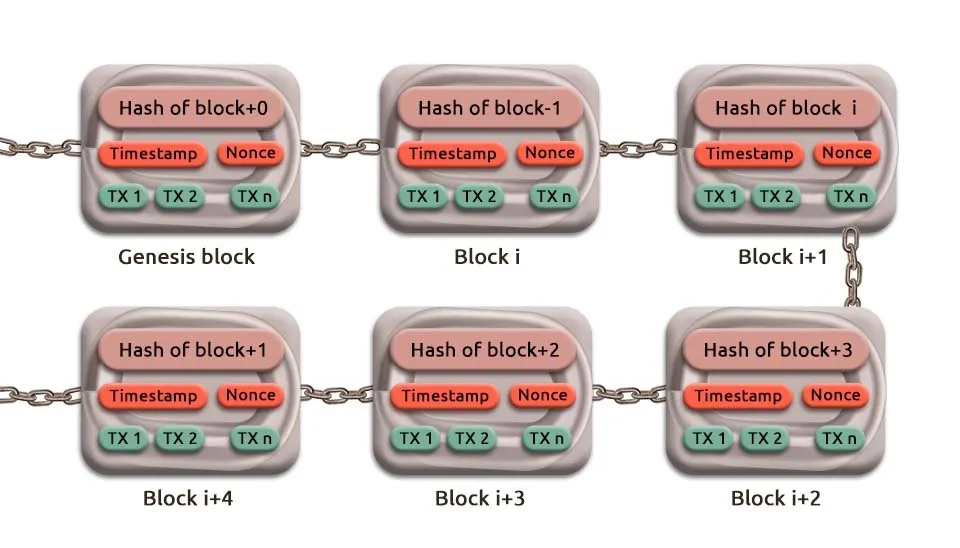
1. Blockchain in Water Governance
Blockchain technology, including smart contracts, Web 3.0, and DAOs, holds the potential to revolutionize governance by promoting transparency, reducing corruption, and decentralizing control. By minimizing physical interactions and eliminating intermediaries, blockchain-based models enhance accountability and prevent data manipulation in governance. However, challenges remain, including scalability and ethical concerns (Ibrahimy et al., 2024; Grover et al., 2021). Blockchain technology is emerging as a transformative tool in water governance by enhancing trust, transparency, and efficiency among stakeholders. Blockchain leads to secure data storage and smart contracts to ensure transparency and sustainable coordination among stakeholders in water governance frameworks (Satilmisoglu et al., 2024).
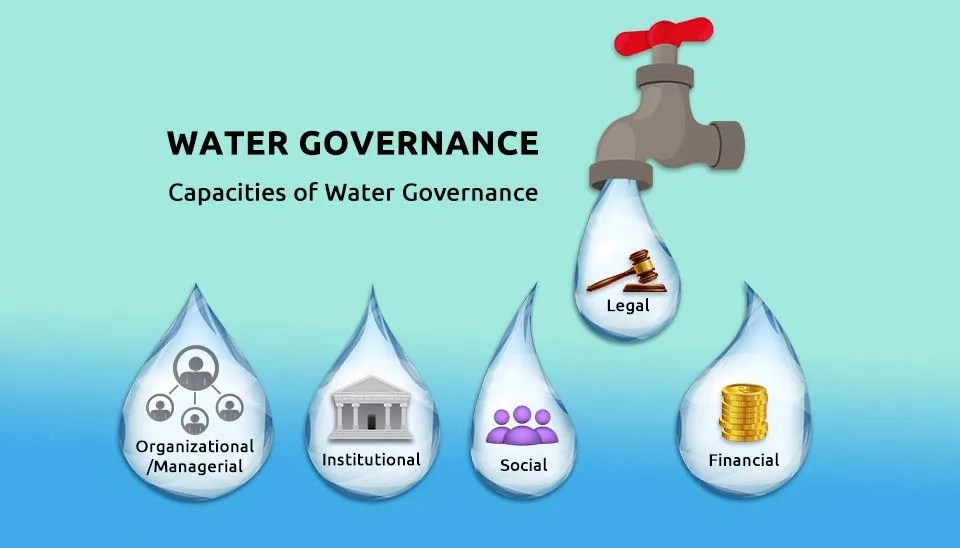
Blockchain can address the socio-economic independence of water governance systems and increase transparency and public engagement. Due to the importance of resilience and efficiency in complex flow systems, blockchain’s transparency and traceability minimize susceptibility to corruption and enhance stakeholder trust. By promoting public participation and linking cryptocurrencies with water management rules, blockchain could foster sustainable management practices across socio-ecological systems, and build resilience against economic and environmental crises (Paiva et al., 2019).
2. Blockchain in Water Quality and Pollution Management
Blockchain technology is being utilized to advance water quality management by enhancing data transparency, accountability, and real-time monitoring. Integration of blockchain and IoT systems can monitor water quality components in industrial tanks and immediately detect and inform violations. This system allows real-time water quality monitoring and enforces accountability by logging violations on the blockchain, which enables transparent penalty enforcement to discourage future infractions (Alharbi et al., 2021). A blockchain-based quality monitoring system can gather data from flexible wireless sensors for water quality indicators such as temperature and dissolved oxygen. The blockchain’s tamper-resistant nature ensures the reliability of the data, which aids in tracking water quality and supports the evaluation of essential applications like survival predictions in waterless transportation of live fish (Feng et al., 2022).
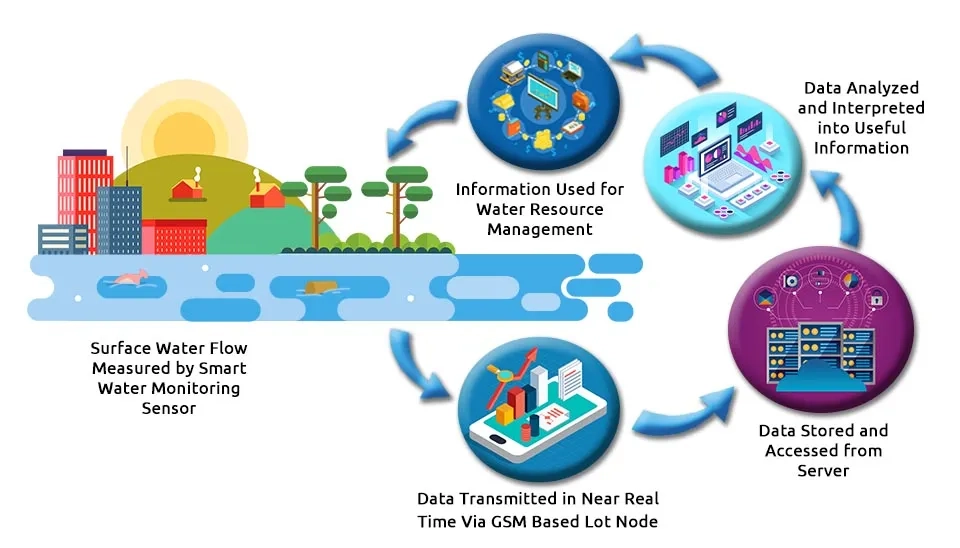
Blockchain can be integrated into public water quality programs to increase transparency and accountability in water quality management. Blockchain’s capacity to securely and transparently manage public data collection increases governmental accountability, and raises public awareness (Ortiz, 2018). Moreover, blockchain can facilitate rapid pollution tracing and source identification in agriculture. To do this, blockchain tracks irrigation water quality, enabling real-time pollution tracing using LoT-enabled sensors and GIS mapping tools. This approach leads effective identification of pollution pathways and ensures quick responses to contamination events, which is crucial for food and environmental safety (Lin et al., 2020).
3. Blockchain in Water Economics and Trading
Blockchain technology has the potential to reshape water economics by promoting transparency, reducing transaction costs, and addressing sustainability challenges. Blockchain can support environmentally friendly water resource enterprises by reshaping financial transactions in water management. The blockchain-driven financial model promotes competitiveness, which can decrease issuers' pricing power and lead to reduced profits as they strive to attract investors. This market shift encourages cost efficiency and potentially increases access to sustainable water investment by fostering a competitive landscape. The decentralized, immutable nature of blockchain helps align water management with environmental objectives and promotes transparency and accountability in financial models within the water sector (Zhang, 2022).
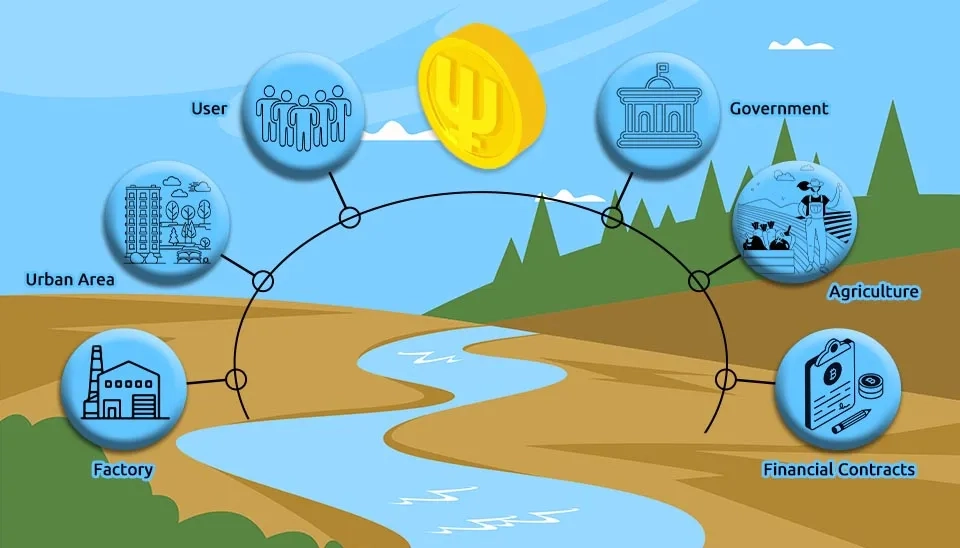
Blockchain enhances the organization of water resource data, which makes it more efficient and structured, and in turn supports decision-making for sustainable water management and energy resource coordination. Another benefit of blockchain in water trading is that digital identities and blockchain-based asset tracking prevent speculative trading by creating transparent, tamper-resistant records for auditors and regulators. This transparency aids in regulating water distribution and trade, reducing costs related to counterparty management while supporting ethical and sustainable water use (Poberezhna, 2018) Although blockchain offers advancements in resource management, challenges remain, particularly regarding its scalability and the diverse factors affecting water economics (Zhang, 2023).
4. Blockchain for Smart Water Management System in Agriculture
Blockchain and its integration with IoT in smart water management systems significantly advance agricultural efficiency, security, and sustainability. Blockchain functions as a distributed ledger which ensures that data exchange across IoT networks is secure and resistant to unauthorized access (Chang et al., 2021). In precision irrigation, IoT sensors measure and transmit real-time crop data, such as water needs and temperature, and create a responsive irrigation process. Blockchain mitigates threats from intrusion by securing this data and enables an uninterrupted flow of critical information that maximizes resource use and improves yields. The integration of blockchain and IoT safeguards data and enhances trust among stakeholders, creating a resilient system where farmers, suppliers, and consumers can confidently depend on the accuracy of crop information and irrigation needs. Table below shows several smart irrigation and agriculture projects worldwide (Bodkhe et al., 2020).
Table Projects of Blockchain for Smart Water Management Systems in Agriculture (Bodkhe et al., 2020)
Project Name | Company Country | Year | Objective |
Provenance | UK | 2013 | To provide greater transparency in the supply chain and agriculture |
Avenews-GT | Eastern Kenya | 2016 | To minimize distribution costs, maintain security in financial transactions, and increase transparency in the supply chain |
Owlchain | China | 2016 | To develop a tracing system for pork |
Foodcoin | Switzerland | 2017 | To cooperate with food startups using a verified model and innovative content |
AgriDigital | Australia | 2017 | To enhance efficiencies and flexibility of the supply chain for end users |
OriginTrail | Slovenia | 2017 | To improve efficiencies for stakeholders and the integrity of product data |
IBM BC | USA | 2017 | To secure business transactions and trading relationships |
Arc-Net | Edinburgh | 2017 | To create a Universally Unique Identifier (UUID) for each asset, as well as digital DNA for every product |
Orbis | USA | 2017 | To increase the use, development, and application of blockchain in smart irrigation |
Ambrosus | Switzerland | 2018 | To build a supply chain quality protocol based on Ethereum |
Lokaal Market | USA | 2018 | To implement regulations to enhance traceability, ensuring actual product value |
TE-Food | Germany | 2018 | To develop reliable software and identification tools that result in transparent livestock and fresh food supply |
San Francisco, CA | 2018 | To provide real-time information about food delivery and its safety |
Blockchain also supports sustainable water management by enabling smart contracts and incentive-based systems for water-saving agriculture. A blockchain-driven incentive model encourages cooperation among farmers, water service companies, and government entities by imposing penalties for non-compliance and rewarding conservation practices (Cao et al., 2024). Blockchain plays a positive role in water rights trading, using decentralized autonomous organizations to facilitate fair and transparent resource allocation. This blockchain-based system promotes efficient water use by reducing transaction costs, enhances transparency, and motivates farmers to adopt sustainable practices (Liu et al., 2022). Therefore, blockchain can transform agricultural water management, ensuring that resources are allocated fairly, securely, and in alignment with environmental sustainability goals.
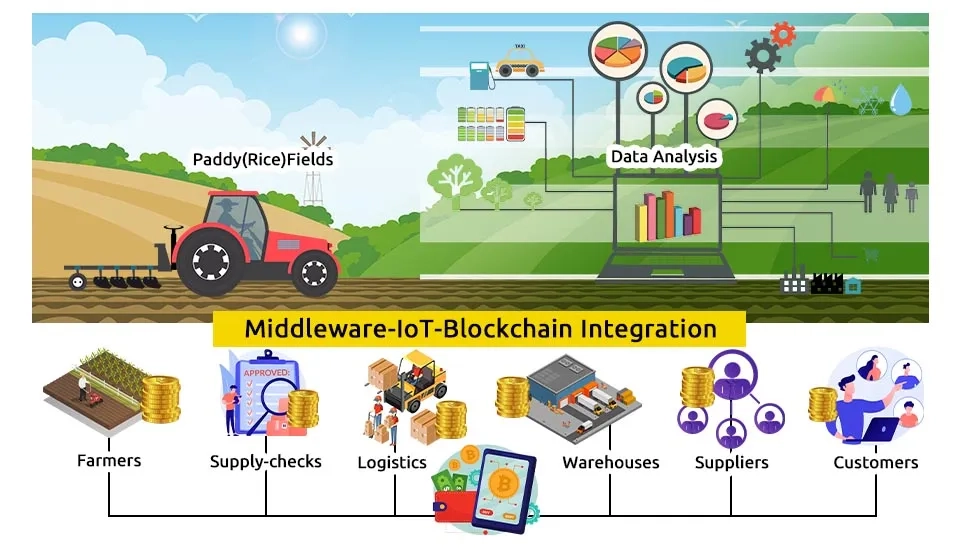
5. Blockchain in Urban Water Management
Blockchain technology, integrated with IoT, has emerged as a robust solution for addressing water management challenges in urban areas. Blockchain can effectively monitor water usage, provide drinking water utilization, reduce water contamination by industries, prevent waste, and improve sanitation practices in smart cities. Smart system design incorporates IoT-enabled smart water tanks that monitor water consumption and enforce limits through automated valve systems, ensuring that households do not exceed a set water allotment. Additionally, sensors detect and report leaks in real time to prevent waste. Blockchain underpins this system by offering a secure, immutable platform for data storage and transmission, thus ensuring transparency and reliability. Blockchain helps cities enhance their water management strategies, reduce resource strain, and promote sustainable urban living (Sundaresan et al., 2021).
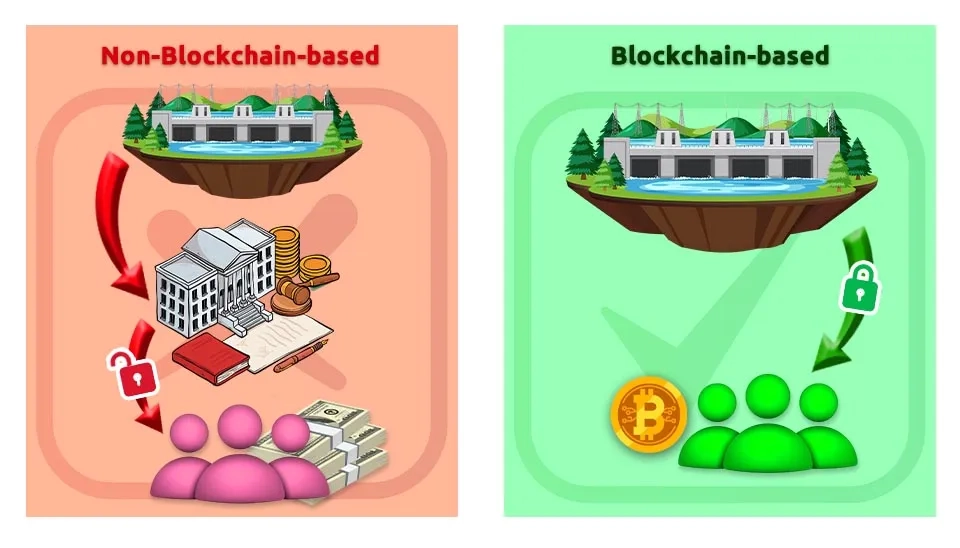
Blockchain, with its capabilities for traceability and disintermediation, can enhance urban water management processes and sanitation services. Smart contracts help automate supplier interactions and handle incidents, make operations more efficient, and reduce dependency on intermediaries. This decentralized approach enhances accountability and traceability (Furones and Monzón, 2023). Blockchain-based framework, integrated with IoT sensors and a modular API, addresses urban water management challenges, such as leakage and inefficient distribution. This framework enhances data reliability through blockchain's secure data-sharing capabilities, supporting real-time monitoring, accurate resource allocation, and improved water flow control (Naqash et al., 2023).
6. Blockchain in Water Sustainable Development Goals
Water is a cornerstone of the Sustainable Development Goals (SDGs), which deeply influence the environmental, social, and economic aspects of sustainable development. The water sector plays a key role in the UN’s 2015 Development Agenda, with SDG 6 specifically dedicated to clean water and sanitation for all and recognizing it as central to all aspects of sustainable development rather than subordinate to other sectors. Governments must adopt integrated water management approaches, which can be challenging but crucial for advancing water security and sustainability (Ait-Kadi, 2016). Due to the complexities in achieving SDG targets related to water, effective SDG implementation requires comprehensive knowledge of water dynamics and the relationships between different SDG targets to avoid counterproductive outcomes. Advanced tools and technologies can support accurate tracking of water-related SDG targets to capture real sustainability measures (Bhaduri et al., 2016).
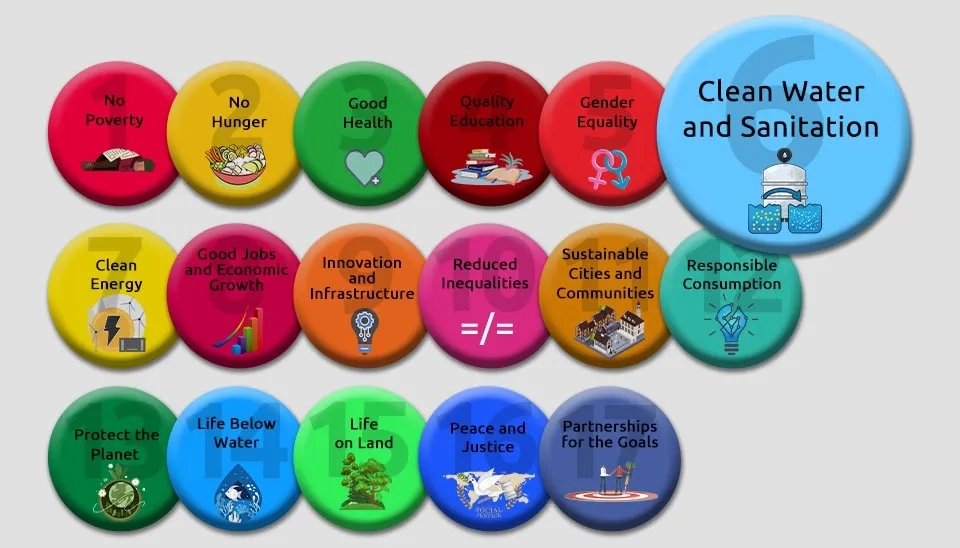
Blockchain technology holds the potential to advance Sustainable Development Goals, including SDG 6 (clean water and sanitation) by enhancing transparency, efficiency, and security in water management systems. Blockchain applications are emerging within various SDGs, while SDGs like finance and supply chain have seen greater attention, water-related SDGs present unique opportunities (Bertucci and Fines Schlumberger, 2023). Blockchain can support SDG 6 targets by enabling transparent water quality reporting, managing water scarcity, and reducing data manipulation risks(Parmentola et al., 2022). It can also offer privacy-preserving incentives for conservation, engaging communities in sustainable water usage. By enabling decentralized, tamper-proof records, blockchain supports efficient water distribution, quality control, and consumption regulation (Jiang et al., 2022). However, policymakers must design supportive frameworks, address both technological implementation and regulatory needs, and use energy-intensive blockchain models to enhance SDG progress.
7. Blockchain in Water Supply and Distribution Management
Blockchain technology offers transformative potential for water supply and distribution systems by enhancing security, transparency, and efficiency. Blockchain for water resource management can provide a platform for real-time water supply and distribution monitoring, using Hyperledger Fabric to securely manage and store data. This platform and system eliminate intermediary databases and allow data to be stored directly on the blockchain, thereby increasing transparency and data security. Data format reorganization and optimized data reading and writing address the challenge of handling large volumes of real-time data (Pahonțu et al., 2020). Furthermore, blockchain improves security for Water Distribution Systems (WDS) by enabling confidentiality, authentication, and data integrity. Blockchain’s decentralized architecture can prevent data duplication, authenticate nodes, ensure secure data transfer, and maintain high data integrity in the water distribution system. However, blockchain technology deals with challenges and limitations such as high energy demands, complex computations, and scalability challenges, especially in upgrading existing centralized networks and sensor constraints (Mahmoud et al., 2019). Integration of blockchain with digital twin technology allows for effective water supply management and optimized resource allocation, anomaly detection, and predictive maintenance (Agarwal et al., 2024).
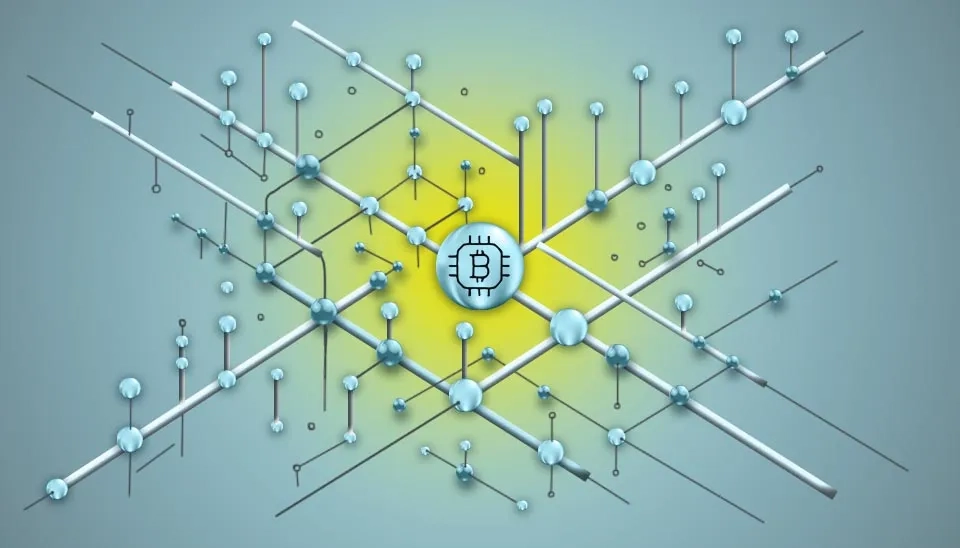
8. Blockchain in Water Utilization and Conservation Management
Blockchain technology offers transformative potential for water utilization and conservation management by addressing challenges in water resource tracking, incentivization, and data sharing. Blockchain has the ability to support sustainable water usage in high-water consumption industries through a differential game model. Blockchain can foster a collaborative decision-making process among stakeholders and encourage investments in water conservation measures, significantly enhancing water efficiency up to an 85% improvement. Blockchain alleviates consumer skepticism about sustainability claims and promotes market demand and profitability in water-efficient products by offering a decentralized and transparent infrastructure (Leng et al., 2024). Moreover, blockchain-based frameworks, combined with machine learning models, can incentivize water conservation at the household level by predicting water needs and demands with edge computing and rewarding users for efficient usage, reducing waste, and fostering sustainable behaviors. Smart contracts on the blockchain network ensure transparent and fair reward distribution, encourage households to stay below forecasted usage, and penalize excess consumption (Thakur et al., 2021).
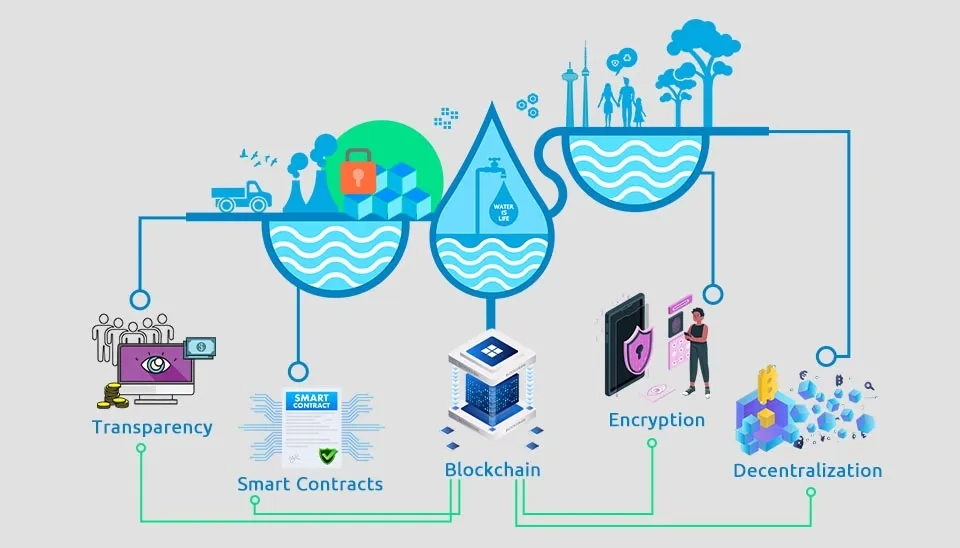
Blockchain can be integrated with multi-participant systems such as government, businesses, and the public to propose a smart water conservancy framework to facilitate water rights trading, real-time monitoring, and secure data transmission (Zhang et al., 2020). Blockchain also enables data sharing and traceability and enhances data integration and transmission while streamlining resource management in the water sector in smart water conservancy. Blockchain’s decentralized ledger ensures transparency and security, enabling more advanced and responsive water utilization and conservation management practices (Li et al., 2024).
9. Blockchain in Wastewater Management and Treatment
Blockchain technology has shown substantial promise in transforming wastewater management and treatment, especially for industries with high water demands. Blockchain reveals the potential capacity to enhance wastewater recycling processes. Industries such as textiles generate effluents with synthetic dyes, which adversely impact aquatic ecosystems by reducing light penetration and oxygen levels. By leveraging blockchain’s decentralized and transparent structure, smart wastewater treatment plants can be managed more effectively and offer secure and accurate records of water use, quality, and recycling efforts. Blockchain also enables the integration of advanced data-scheduling algorithms, which can optimize the treatment process for textile and other industrial wastewater (Rathi and Kumar, 2022). Blockchain can also be used to monitor industrial waste through decentralized ledgers accessible to government agencies, environmental protection groups, and industrial stakeholders, and help enforce regulations and track environmental impacts more effectively (Hakak et al., 2020).
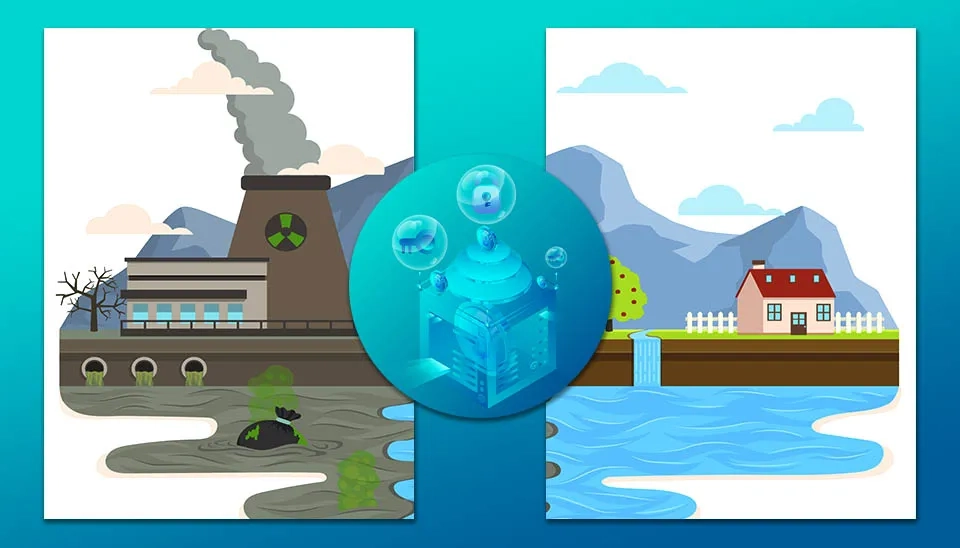
Blockchain’s use of smart contracts helps facilitate the allocation of tokens as incentives for industries that reuse wastewater, which creates a closed-loop incentive model to encourage sustainable practices while safeguarding data integrity through tamper detection. Besides blockchain, IoT and machine learning systems can be used to monitor wastewater quality and volume and detect data anomalies that indicate tampering (Iyer et al., 2019). Blockchain can be coupled with deep learning to enhance the management of wastewater treatment plants (Wan et al., 2020). In sum, blockchain offers robust solutions for wastewater management by enhancing data transparency, fostering accountability, and integrating with advanced technologies like IoT and machine learning. It not only supports tracking and compliance but also provides incentives for sustainable water practices, presenting a multifaceted approach to modern wastewater management.
10. Conclusion
This article covers all aspects of blockchain in water resources management as an emerging tool to enhance water resource sustainability. Blockchain technology presents transformative potential across multiple domains of water resource management, which offers secure, transparent, and decentralized solutions that address some of the most pressing water challenges today. In water governance, blockchain fosters trust and accountability, while in pollution and quality management, it enables precise, real-time monitoring of contaminants. Through water economics and trading, blockchain facilitates transparent market exchanges, improving resource allocation and incentivizing sustainable practices. Agriculture benefits from blockchain-enabled smart water systems that optimize irrigation and water distribution. In urban water management, blockchain enhances infrastructure resilience and maintenance, promoting efficient resource use. This technology also aligns with Sustainable Development Goals, supporting equitable access to clean water and efficient distribution systems. Furthermore, blockchain aids in water utilization and conservation by encouraging stakeholder cooperation and enhancing conservation practices in high-water-usage industries. Its application in wastewater management and treatment allows for secure tracking of water recycling efforts, ensuring compliance with regulations and promoting environmental health. Altogether, blockchain in water resource management provides a cohesive framework for improving water efficiency, transparency, and sustainability, paving the way for a more secure and equitable water future.
